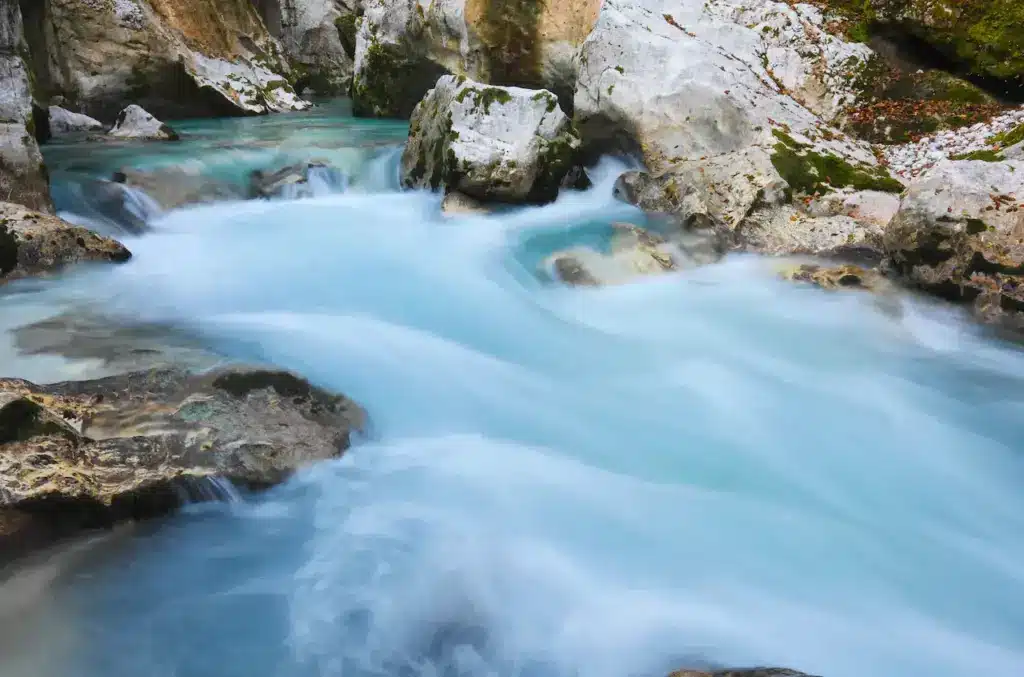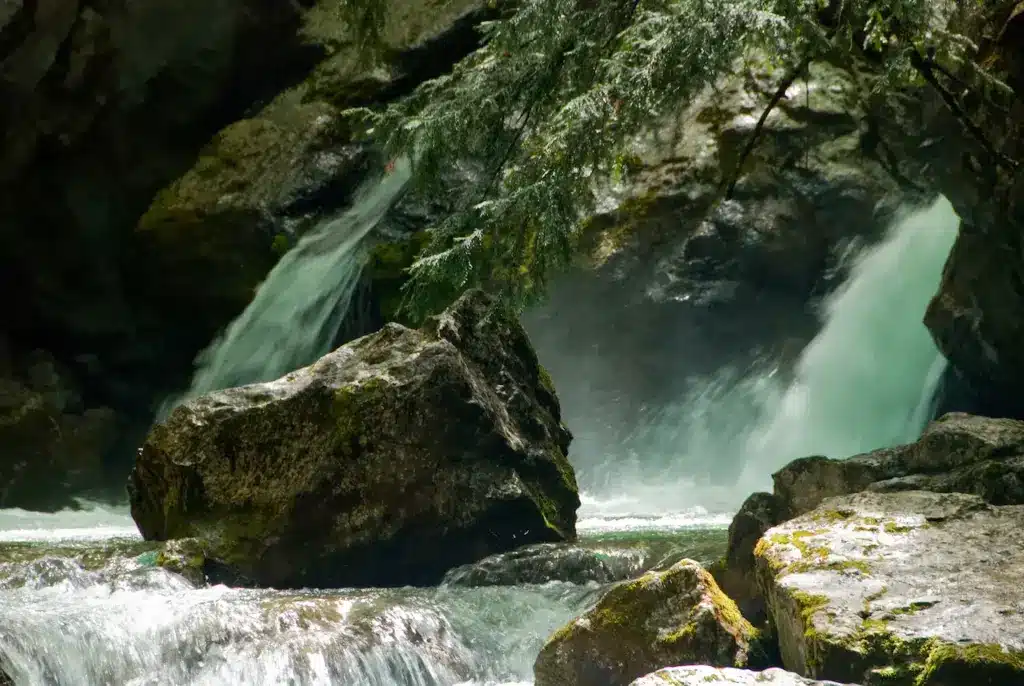Freshwater Ecosystems
Freshwater Ecosystems And Biodiversity
Freshwater ecosystems encompass lakes, rivers, streams, wetlands, and groundwater. They provide essential services supporting human water security and biodiversity conservation. Freshwater ecology examines the physical, chemical, and biological components of these systems and their interactions.
Threats from pollution, invasive species, and climate change make studying and protecting freshwater ecosystems an urgent priority. Robust ecological knowledge aids the development of science-based policies balancing human water demands with environmental sustainability.
Types of Fresh Water Ecosystems
Several major ecosystem types categorised by hydrology occur in freshwater:
Rivers and Streams

Flowing waters moving through defined channels toward the sea comprise river and stream ecosystems. They exhibit unidirectional current, erosion, and nutrient transport from terrestrial systems. Headwater streams influence properties downstream. Stream ecologists study biodiversity patterns influenced by environmental gradients.
Lakes
Lakes are inland water bodies occupying a depression filled with varying depths of standing water. Lakes stratify vertically into mixing zones based on temperature and chemistry. Lake morphometry and surrounding landscape influence ecological characteristics. Shallow, nutrient-rich lakes support more algal production.
Wetlands
Wetlands have saturated soils and adapted plant communities. Bogs, fens, marshes, floodplains, and swamps represent types of freshwater wetlands. High primary productivity and interchange between wetlands and other systems provide important ecosystem services. Wetlands filter nutrients, absorb floodwaters, and recharge groundwater.
Groundwater
Water occupying saturated subsurface rock and sediment comprises groundwater systems. Connected to surface waters and dependent biota, groundwater discharge sustains flows during dry periods. Stygofauna are adapted to live in groundwater. Excess nutrient levels degrade groundwater quality. Adequate recharge is essential.
Reservoirs
Human-constructed reservoirs form artificial lake ecosystems used for water supply, recreation, hydroelectricity, and flood control. Stratification patterns influence reservoir water quality. Reservoirs alter natural flow regimes with ecological consequences. Reservoirs may be managed to favor desirable sport fisheries.
Abiotic Factors
Freshwater ecosystems exhibit unique physical and chemical characteristics structured along spatial gradients:
Hydrology
Flow volumes, water source inputs, flushing rate, and hydrologic connectivity shape freshwater communities. High flows disturb stream benthos but maintain habitat heterogeneity. Drought intensifies competition and predation. Dams and water extractions alter natural hydrologic regimes.
Morphometry
The depth, surface area, shape, and perimeter of aquatic systems influence temperature, mixing, and species distributions. Deeper lakes stratify more. Rivers widen downstream. Stream shape affects detrital processing. Basin shape influences wetland floodwater storage.
Light
Light availability declines with depth and turbidity, creating photic zonation in lakes. Light aids aquatic plant photosynthesis. Algae tracks light levels daily. Riparian shading influences stream primary production. Wetland plants tolerate low light in turbid waters.
Thermal Regime
Water temperature affects dissolved oxygen, metabolic rates, and the growth of aquatic biota. Rivers span wider temperature ranges than lakes. Stratification patterns generate seasonal turnover in deep lakes. Climate and riparian cover drive temperature variation.
Chemistry
Water chemistry, including nutrients, dissolved salts, pH, and contaminants, shapes biological communities and productivity. Nutrient limitation frequently restricts algal growth. Acidity limits sensitive species. Toxins cause health and reproductive effects.
Substrate
Sediment size and stability affect stream macroinvertebrate habitat suitability and refugia. Soft lake substrates accumulate more organic matter. Soil composition and hydrologic regime influence wetland plant distribution. The substrate provides attachment surfaces.
Biological Components
A diversity of organisms inhabits freshwater ecosystems and interacts in complex food webs:
Microbes
Bacteria and phytoplankton-like diatoms and cyanobacteria form the base of aquatic food webs. Microbes generate biomass from inorganic nutrients, mineralise detritus, transform pollutants, and cycle nutrients. Biofilms coat submerged surfaces.
Aquatic Plants
Rooted and floating aquatic macrophytes inhabit lakes, wetlands, and slow waters. Submersed species propagate primarily via clonal growth. Plants release oxygen into the water column, provide fish habitat, and inhibit algal blooms.

Macroinvertebrates
Aquatic insect larvae, snails, worms, and zooplankton like Daphnia occupy key consumer trophic levels. Growth and distribution relate to temperature, food, flow refuge, and substrate. Sensitive taxa indicate water quality changes.
Fish
Diverse fish species occupy distinct trophic guilds based on food habits and habitat needs. Streamfish are rheotactic with morphological adaptations to current. Stocking shifts fish community structure. Migratory fish move between fresh waters and oceans.
Amphibians and Reptiles
Salamanders, frogs, turtles, and snakes depend on aquatic and wetland habitats for all or part of their life cycle. They require suitable water quality conditions. Wetlands provide refuge from fish predation. Reptiles bask on logs and banks.
Birds and Mammals
Wetland-associated mammals include muskrats, beavers, and river otters. Waterfowl, wading birds, and shorebirds forage, overwinter, or nest in fresh waters. Mammals and birds transport nutrients and propagules between aquatic systems.
Ecological Processes and Functions
Key ecosystem processes occur in freshwaters that support services beneficial to humans:
Productivity
Algae, aquatic plants, and phytoplankton convert light and chemical energy into biomass during primary production. Rates depend on light, temperature, and nutrients. This organic matter supports consumers up the food chain.
Nutrient Cycling
In nutrient cycles, organisms assimilate chemical elements like nitrogen and phosphorus for growth and release them upon death and in waste. Nutrients pass through environmental reservoirs modified by biotic and abiotic processes.
Decomposition
Detrital processing by shredders and microbial activity mineralises organic matter into simpler inorganic compounds. Leaf litter breakdown rates vary with temperature, moisture, and invertebrate colonisation. Coarse particulate organic matter provides habitat.
Secondary Production
The generation of consumer biomass through autotroph consumption constitutes secondary production. Macroinvertebrate and vertebrate growth efficiency and fecundity relate to temperature and food web complexity sustaining higher trophic levels.
Hydrologic Regulation
Wetlands, floodplains, and riparian areas absorb and slowly release precipitation, runoff, and floodwaters to reduce peak flows and sustain baseflows. This recharges groundwater and reduces downstream flood damage.
Water Purification
Physical, chemical, and biological processes remove contaminants and excess nutrients from freshwater as it flows through aquatic systems and their soils and biota. This improves water quality for human use.
Carbon Storage
Aquatic organisms assimilate carbon. Sediments accumulate organically derived carbon over long timespans. This natural carbon sequestration helps regulate greenhouse gases and climate.
Threats to Freshwater Ecosystems
Multiple anthropogenic stressors endanger freshwater biodiversity and ecosystem services:
Habitat Loss and Fragmentation
Channelisation, drainage ditches, dams, and levees disrupt hydrologic connectivity. Wetland filling eliminates habitat and water storage capacity. The remaining habitat occurs in smaller disconnected patches.
Invasive Species
Non-native plants, fish, invertebrates, and pathogens outcompete native species, alter food webs, and degrade ecological conditions. Transport vectors like ballast water spread invasives between disconnected basins.
Pollution
Excessive nutrient loading causes eutrophication and harmful algal blooms that lower dissolved oxygen levels. Contaminants like heavy metals and pharmaceuticals accumulate through the food web with toxic effects.
Overexploitation
Unsustainable surface and groundwater withdrawals for irrigation and usage exceed recharge rates and natural flows required by aquatic organisms. Overfishing depletes populations.
Climate Change
Changing precipitation regimes, warming water temperatures, dissolved oxygen depletion, and amplified extreme weather threaten the physiological tolerances of aquatic biota and ecosystem resilience.

Synergistic Stressors
Multiple stressors interact synergistically, amplifying ecological impacts. For example, eutrophication worsens the effects of contaminants, and low streamflow exacerbates warm temperatures. Monitoring assesses dynamic threat levels.
Conclusion
Freshwater ecosystems provide a habitat for rich biodiversity along with essential services that support human water security and welfare.
Lakes, rivers, wetlands, and groundwaters comprise interconnected systems shaped by dynamic physical, chemical, and biological processes influencing their ecology and functions. However, these critical ecosystems face escalating threats from human activities.
Moving forward, the field of freshwater ecology will remain crucial for guiding protection and restoration efforts through expanding knowledge of freshwater interactions, biodiversity patterns, ecosystem processes, and quantifying system responses to anthropogenic disturbances.


